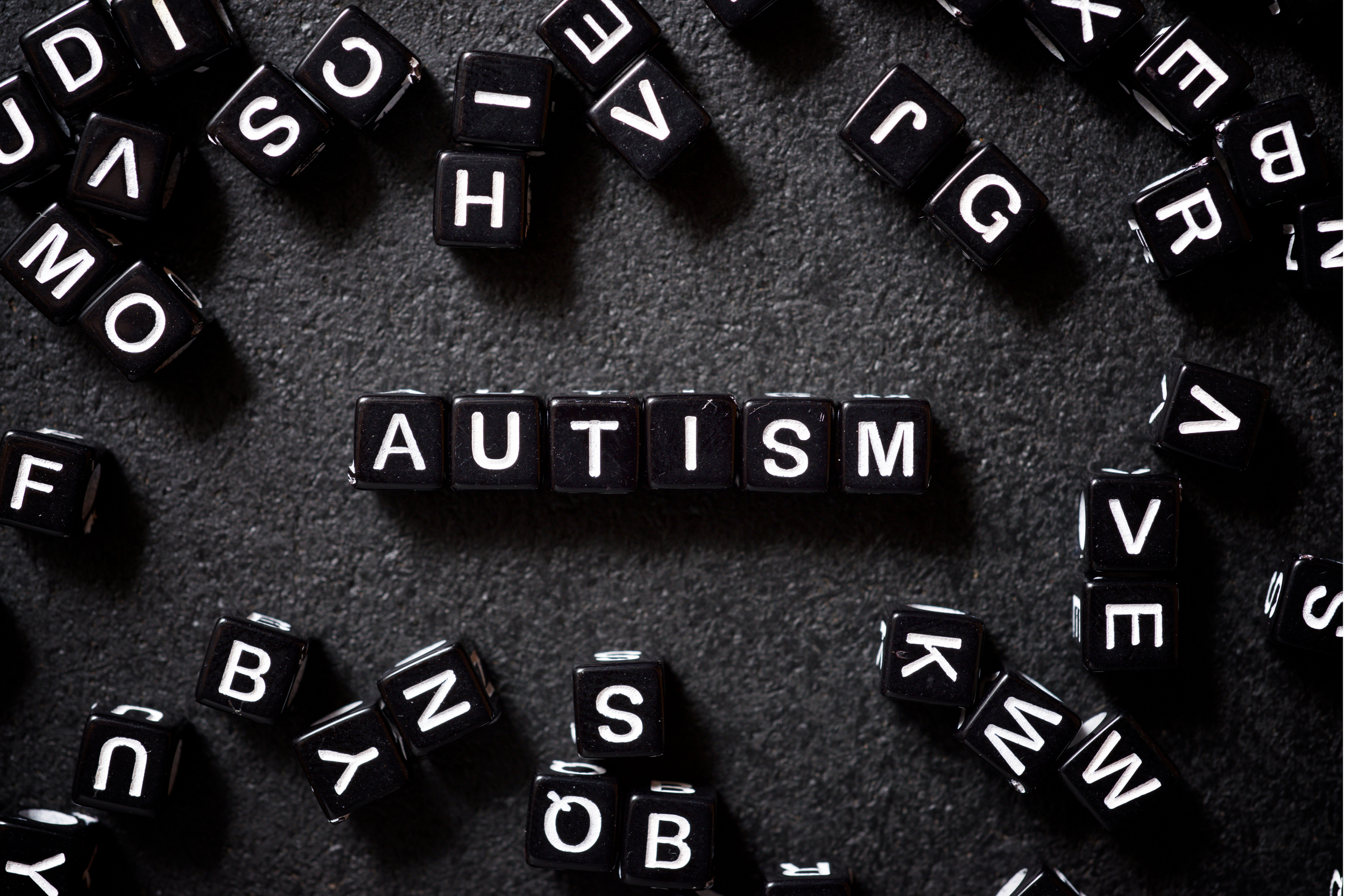Navigating New Horizons
Adulthood is often celebrated as a time of personal growth, independence, and achieving milestones (e.g., buying a home and career advancement). Each life experience involves responsibilities, unexpected life circumstances, and challenges that mold an individual. Amidst the whirlwind of adult life, how does one navigate an adulthood diagnosis of autism spectrum disorder (ASD)? Typically, ASD is diagnosed during childhood, where an individualized plan and support may more readily exist. While adults can achieve numerous feats, receiving an autism diagnosis in adulthood can be a validating and liberating experience.
Adulthood Autism Diagnosis Journey
Autism is a neurodevelopmental condition categorized by challenges in two main areas: communication and interaction with others, and repeated certain behaviors or focus on particular interests.[1] Common indicators of autism include interpreting statements literally, struggling to grasp others' thoughts or words, experiencing heightened anxiety in social situations, and maintaining a strict daily routine - with anxiety arising from any alterations to it.[2] The most effective way to diagnose autism involves working with a team of licensed mental health and healthcare professionals (e.g., primary care doctor, neurologist, psychiatrist) with experience in autism. These trained professionals observe an individual's behavior and review their medical and developmental history.[3]
Behaviors consistent with autism must have manifested during childhood, making it crucial to recollect those exhibited during that period in an interview or questionnaire. The assessment can still be completed if an individual cannot recall developmental histories. Furthermore, an individual's family members can participate in the evaluation and provide developmental histories.[4] Throughout the assessment process, individuals should anticipate questions that pertain to difficulties in navigating social communication and interaction, sensory sensitivities, repetitive behaviors, and highly specific interests.[5] Following the assessment, an individual may receive a diagnosis of autism or not. If an autism diagnosis is confirmed, it is recommended to actively seek support and ongoing services, and access available resources to address any questions or concerns.
Self-Perception Before and After Diagnosis
The stigma that may accompany an autism diagnosis is often shaped by how the public interprets the observable traits of Autistic individuals. Turnock et al. (2022) notes that various factors can moderate or influence this stigma, including the extent and quality of interactions with autistic individuals, cultural influences, gender differences, personal variations, and how a diagnosis is revealed or disclosed.[6] Addressing and diminishing this stigma promotes greater awareness, simplifies the diagnosis process, and provides a more supportive environment for those with autism.[7]
A study by Leedham et al. (2019) examines the experience of 11 adult participants who received an autism diagnosis aged at, or over, 40 years.[8] The nine-question interview resulted in answers that can be categorized into themes, including:
a hidden condition
the process of acceptance
the impact of others post-diagnosis
a new identity on the autism spectrum
The 11 participants expressed their life experiences and self-perception before their diagnosis. Some participants stated that they internalized beliefs of being "wrong," "flawed," or "bad" because of connections that felt "failed".[9] Participants shared that they mimicked "normal" behaviors as a survival function, but that these behaviors resulted in feelings of exhaustion and unhappiness.[10]
A study by Stagg & Belcher (2019) examined 9 participants between the ages of 52 and 54 who received their autism diagnosis later in life.[11] This cohort shared similar life experiences to the Leedham et al. study, with some participants indicating they “never made friends”, social events were difficult, and they felt utterly isolated.[12] Additionally, two studies by Atherton et al. (2021) examined a total of 428 participant's life experiences to measure their quality of life relative to their diagnostic age. The correlation found that the diagnostic age later in life was associated with poorer quality of life. The participants stated painful experiences that affected their self-perception amidst sensory discomforts and recalling social miscommunications.[13]
Conversely, Leedham et al. note that after diagnosis, participants expressed feeling more free, better about themselves, less anxiety, and better self-awareness.[14] Participants indicated they had devised positive coping strategies to address anxiety and being overwhelmed. Lastly, there was a significant shift from self-judgment to self-empathy once they were aware of their diagnosis. Stagg & Belcher note that participants indicated post-diagnosis: feeling like it was a eureka moment, a complete relief, being stunned because it was not obvious to them before, and identifying that now they are viewing themselves in a different light.[15] Likewise, Atherton et al. (2021) found that their participants expressed that the diagnosis brought a sense of clarity.[16]
Value of Adulthood Autism Diagnosis
After interviewing participants diagnosed later in life, there were a few repeating challenges expressed throughout navigating the diagnostic process. These challenges included the obstacles of getting diagnosed, weighty emotional responses, and realizing the diagnosis explains the differences they recognized about themselves earlier in life.[17] The assessment's waitlist and wait times, lack of autism specialists, and the cost of care were specific obstacles highlighted in the studies. Throughout the interviews, participants noticed there was a lack of public awareness about autism, which contributed to their unmet needs. However, they could see that their autistic traits matched others with autism or the diagnosis criteria.[18]
Participants explained that their late diagnosis was due to the lack of awareness about autism during their childhoods. Although family members had suspicions, they were unable to find explanations why their child did not appear neurotypical. Later in life, when participants received their diagnosis, they experienced relief and emotional validation. Additionally, the new diagnosis assisted participants in understanding their identity and challenges in a new light. One participant expressed that being able to articulate themselves and their diagnosis better was amazing and validating. Ghanouni & Seaker (2023) noted that although participants knew they were different from a young age, the new understanding allowed them to re-examine their previous life experiences.[19] The diagnosis allowed participants to explain their understanding of their needs and their relationships. For example, Leedham et al. (2019) explains that a participant’s partner can now take the lead in situations where they know the participant is uncomfortable, whereas in the past they might have thought their partner was simply acting awkwardly.[20]
Understanding Co-Occurring Conditions: Autism & Comorbidities
Navigating the path to an adult autism diagnosis is a multi-faceted journey that extends well beyond receiving a single diagnosis and is rarely homogenous. Autism frequently intersects with other conditions, collectively known as co-occurring conditions or comorbidities. A recent study by Jadav and Bal (2022) delved into the correlation between the age of diagnosis and the emergence of co-occurring psychiatric conditions among adults on the autism spectrum.[21] They found that adults who received their autism diagnosis at the age of 21 or older reported significantly higher rates of anxiety disorders, depression, and dysthymia than those diagnosed before the age of 21.
These findings underscore the importance of comprehending the impact of various psychiatric conditions on the lives of adults with autism. In particular, life experiences (e.g., enduring societal exclusion, grappling with a diminished self-image, and enduring bullying) can significantly contribute to the prevalence of depression and anxiety disorders among this population.[22] Furthermore, the study highlights that generational mental health stigmas and a lack of awareness can influence the timing and willingness of adults to seek a diagnosis. According to Barlattani (2023), ADHD has the highest prevalence among psychiatric comorbidities in autism, followed by anxiety disorders. 70% of people with autism experience one comorbid psychiatric disorder, increasing the need to adapt and implement diagnostic tools for adults with autism.[23] Thus, acquiring a proper and valid diagnosis proves invaluable by offering autistic individuals of all ages significant benefits, especially for those experiencing comorbid conditions.
If you or someone you know has or suspects that they have Autism Spectrum Disorder, please reach out to a licensed mental health professional (e.g., a psychotherapist, psychologist or psychiatrist) for additional guidance and support. Note: the University of Washington’s UW Autism Center offers many resources and provider options.
Contributed by: Kelly Valentin
Editor: Jennifer (Ghahari) Smith, Ph.D.
references
1 Ghanouni, P., & Seaker, L. (2023). What does receiving autism diagnosis in adulthood look like? Stakeholders’ experiences and inputs. International Journal of Mental Health Systems, 17(1). https://doi.org/10.1186/s13033-023-00587-6
2 Signs of autism in adults. (2023, March 8). nhs.uk. https://www.nhs.uk/conditions/autism/signs/adults/
3 Ghanouni & Seaker (2023)
4 Autism spectrum Disorder. (n.d.). National Institute of Mental Health (NIMH). https://www.nimh.nih.gov/health/topics/autism-spectrum-disorders-asd
5 Ibid.
6 Turnock, A., Langley, K., & Jones, C. R. G. (2022). Understanding Stigma in Autism: A Narrative review and Theoretical model. Autism in Adulthood, 4(1), 76–91. https://doi.org/10.1089/aut.2021.0005
7 Ibid.
8 Leedham, A., Thompson, A. R., Smith, R., & Freeth, M. (2019). ‘I was exhausted trying to figure it out’: The experiences of females receiving an autism diagnosis in middle to late adulthood. Autism, 24(1), 135–146. https://doi.org/10.1177/1362361319853442
9 Ibid.
10 Ibid.
11 Stagg, S. D., & Belcher, H. (2019). Living with autism without knowing: receiving a diagnosis in later life. Health Psychology and Behavioral Medicine, 7(1), 348–361. https://doi.org/10.1080/21642850.2019.1684920
12 Leedham, A., Thompson, A. R., Smith, R., & Freeth, M. (2019). ‘I was exhausted trying to figure it out’: The experiences of females receiving an autism diagnosis in middle to late adulthood. Autism, 24(1), 135–146. https://doi.org/10.1177/1362361319853442
13 Atherton, G., Edisbury, E., & Piovesan, A. (2021). Autism Through the Ages: A Mixed methods approach to understanding how age and age of diagnosis affect quality of life. Journal of Autism and Developmental Disorders, 52(8), 3639–3654. https://doi.org/10.1007/s10803-021-05235-x
14 Leedham et al., (2019)
15 Stagg & Belcher (2019)
16 Atherton et al., (2021)
17 Ghanouni & Seaker (2023)
18 Ibid.
19 Ibid.
20 Leedham et al., (2019)
21 Jadav, N., & Bal, V. H. (2022). Associations between co‐occurring conditions and age of autism diagnosis: Implications for mental health training and adult autism research. Autism Research, 15(11), 2112–2125. https://doi.org/10.1002/aur.2808
22 Ibid.
23 Barlattani, T. (2023). Autism spectrum disorders and psychiatric comorbidities: a narrative review. Journal of Psychopathology. https://doi.org/10.36148/2284-0249-N281






